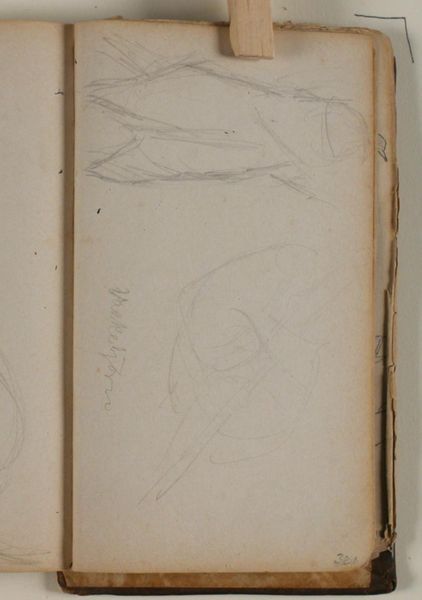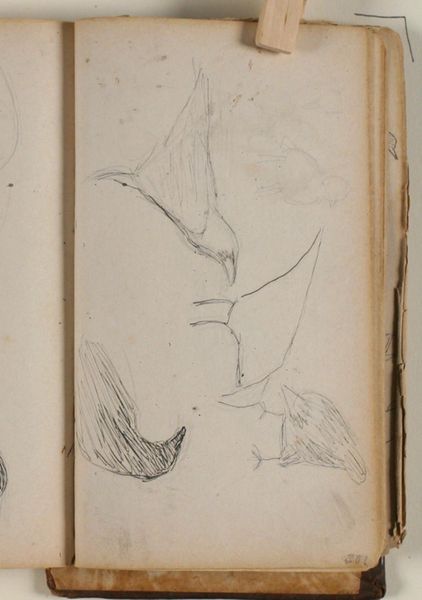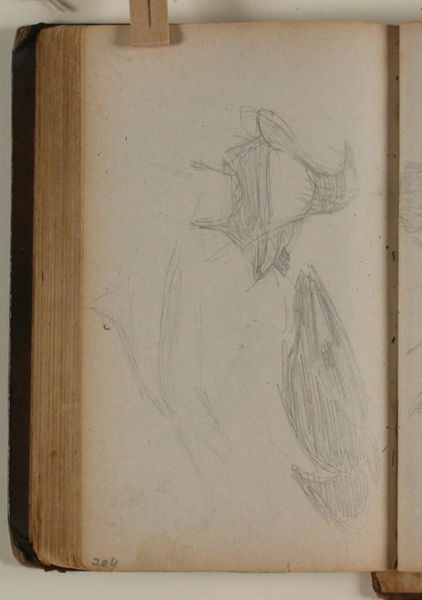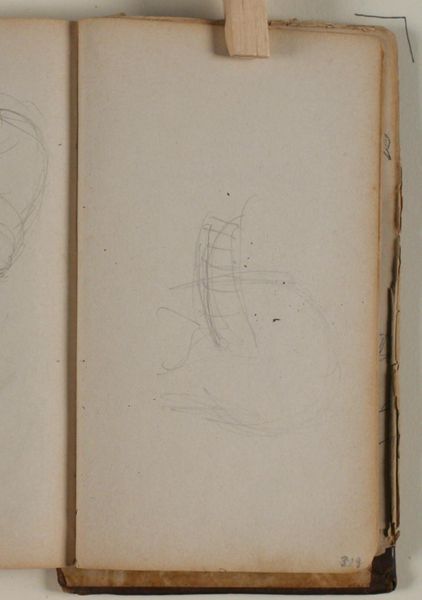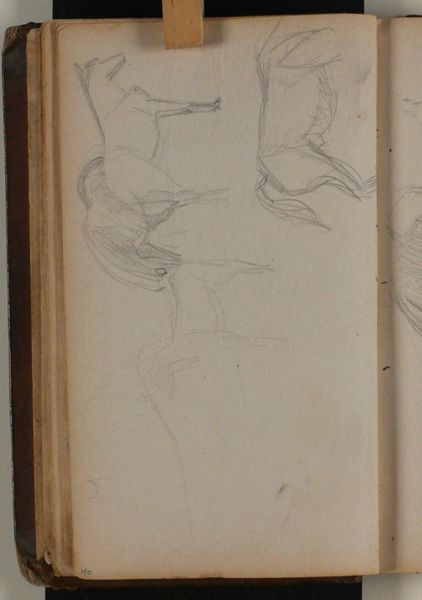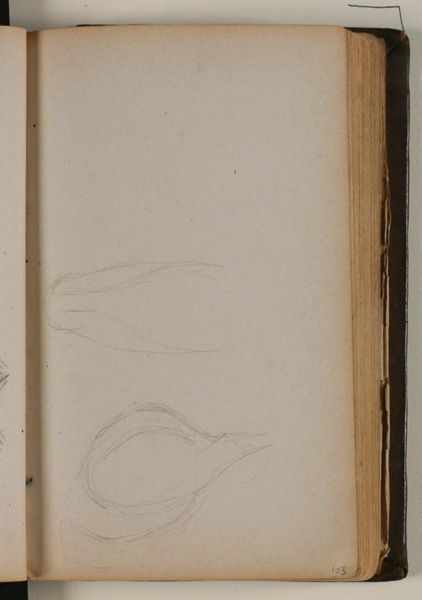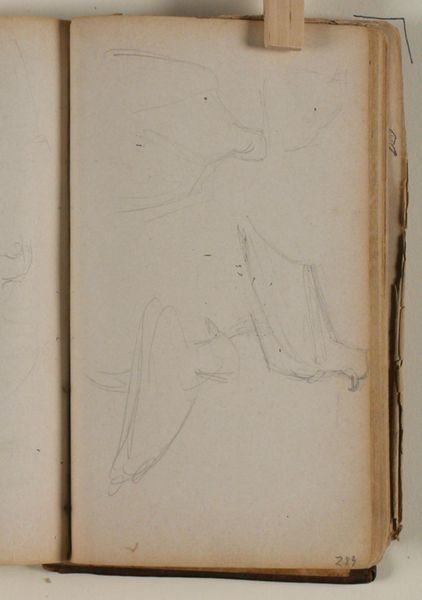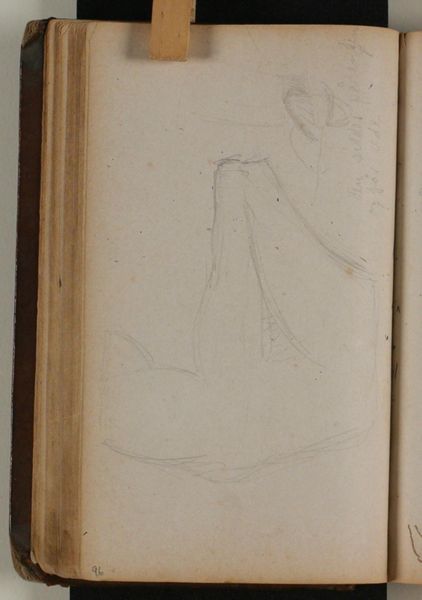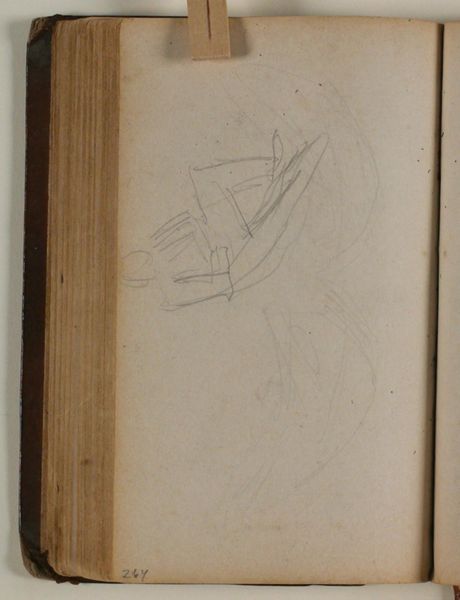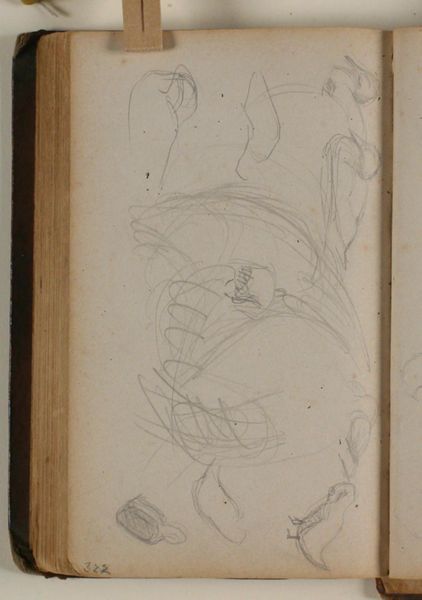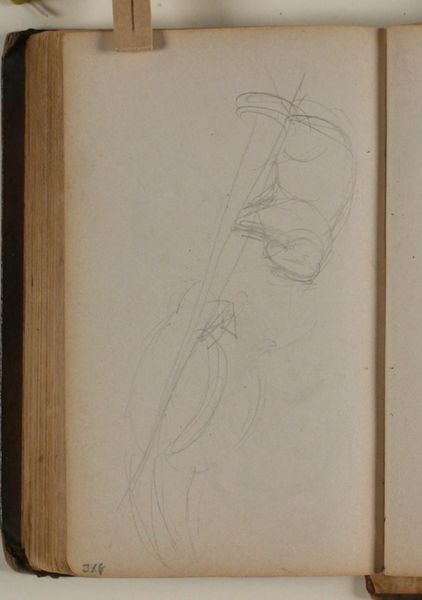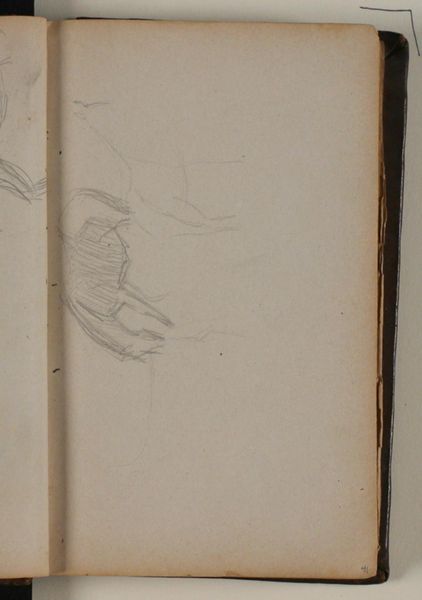
drawing, pencil, graphite
#
drawing
#
coloured pencil
#
underpainting
#
pencil
#
graphite
Curator: I'm struck by the raw quality of this quick sketch. It seems almost like a fleeting thought, barely captured on paper. Editor: Indeed. This is "Studie af næsebjørn" – "Study of a Coati" – by Niels Larsen Stevns. We think it was likely executed sometime between 1864 and 1941. The medium seems to be pencil and graphite, possibly with some coloured pencil work as well. You can see it here in a sketchbook from the collection of the SMK, the Statens Museum for Kunst. Curator: A coati, huh? I can see the form, but it’s so light and almost ephemeral. Like a dream animal glimpsed in the early hours. There is also some handwriting and numbering next to it, probably the artist keeping a track of all their study works. I think he was really interested in catching how the light creates dimension. Editor: You’ve keyed into something crucial there. During the late 19th and early 20th centuries, museums became sites of both artistic study and public edification. Artists like Stevns used museum collections as sources for their own practice, making studies like this. I am guessing that Stevns went to a Copenhagen museum to view this animal, probably behind a fence. It highlights the complex relationship between museums, nature, and artistic production. How did people in this time have encounters with different animals from all around the world. Curator: That contextualizes the sketch perfectly! It is really a reflection on captivity in so many ways, when you bring up that angle. Also, there is the way that zoos display life forms, the ways that some lifeforms remain behind the bars of language. Is it simply a "coati"? That clinical label flattens any spiritual dimension to this being, doesn’t it? Editor: Precisely! And I think Stevns, through the quick, tentative nature of the sketch, is almost hinting at that fleeting, ultimately unknowable quality. He’s not aiming for anatomical precision; he’s chasing an impression, a feeling of something elusive. It brings the real animal closer, without us realizing it. Curator: I agree. I thought the study was missing detail, now I know this was because the animal itself couldn’t even be truly present in the studio in any meaningful sense. A really wonderful capture then. Editor: An image prompting so many reflections, still inspiring thoughts almost a century on. A good outcome, I think.
Comments
No comments
Be the first to comment and join the conversation on the ultimate creative platform.
